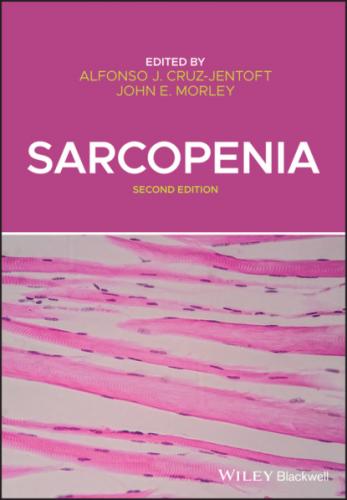Crucially, all of the above should be approached with a multitude of in/ex vivo; techniques, combining recent electrophysiological advances such as intramuscular and high‐density electromyography (iEMG, HD‐sEMG), and molecular biology markers of denervation–reinnervation such as alterations in gene expression, production of exercise‐induced myokines, and fiber type morphology.
CONCLUSIONS
A healthy neuromuscular system is paramount to maintaining ambulation into old age. Any compromise to the integrity of MUs, including, apoptosis of motor neurons, denervation–reinnervation, muscle fiber atrophy and shifts in fiber type, may reduce the functional capacity of MUs and subsequently affect the force output of skeletal muscles. If MU remodeling persists, and reaches a threshold whereby sarcopenia occurs, the risk of frailty, disability, and premature mortality is high. Evidence from masters athletes highlights the benefits of lifelong exercise in both endurance‐ and strength‐type exercises; however, clear mechanistic evidence is lacking. Finally, future work is required to investigate the mechanisms which precede neuromuscular remodeling. Identifying these aspects may help to develop therapeutic drugs for those who cannot exercise (i.e., bed‐bound, post hip fracture) or those who are not willing to engage in physical activity regimens.
REFERENCES
1 1. Tieland M, Trouwborst I, Clark B. Skeletal muscle performance and ageing. J Cachexia Sarcopenia Muscle [Internet]. 2017; 9(1):3–19. Available from: https://www.ncbi.nlm.nih.gov/pmc/articles/PMC5803609/
2 2. Schiaffino S, Reggiani C. Fiber types in Mammalian skeletal muscles. Physiol Rev 2011 Oct; 91(4):1447–531.
3 3. Tomlinson BE, Irving D. The numbers of limb motor neurons in the human lumbosacral cord throughout life. J Neurol Sci [Internet]. 1977 Nov 1 [cited 2018 Nov 23]; 34(2):213–9. Available from: http://www.ncbi.nlm.nih.gov/pubmed/925710
4 4. Mittal KR, Logmani FH. Age‐related reduction in 8th cervical ventral nerve root myelinated fiber diameters and numbers in man. J Gerontol 1987; 42(1):8–10.
5 5. Kawamura Y, Okazaki H, O’brien PC, Dyck PJ. Lumbar motoneurons of man: I) number and diameter histogram of alpha and gamma axons of ventral root. J Neuropathol Exp Neurol 1977; 36(5):853–60.
6 6. McNeil CJ, Doherty TJ, Stashuk DW, Rice CL. Motor unit number estimates in the tibialis anterior muscle of young, old, and very old men. Muscle Nerve [Internet]. 2005 Apr 1 [cited 2018 Nov 26]; 31(4):461–7. Available from: http://doi.wiley.com/10.1002/mus.20276
7 7. Power GA, Dalton BH, Behm DG, Doherty TJ, Vandervoort AA, Rice CL. Motor unit survival in lifelong runners is muscle dependent. Med Sci Sports Exerc [Internet]. 2012 Jul [cited 2019 Dec 10]; 44(7):1235–42. Available from: http://www.ncbi.nlm.nih.gov/pubmed/22246219
8 8. Piasecki M, Ireland A, Stashuk D, Hamilton‐Wright A, Jones DA, McPhee JS. Age‐related neuromuscular changes affecting human vastus lateralis. J Physiol 2016 Aug 15; 594(16):4525–36.
9 9. Boe SG, Stashuk DW, Doherty TJ. Within‐subject reliability of motor unit number estimates and quantitative motor unit analysis in a distal and proximal upper limb muscle. Clin Neurophysiol 2006; 117(3):596–603.
10 10. Piasecki M, Ireland A, Jones DA, McPhee JS. Age‐dependent motor unit remodelling in human limb muscles. Biogerontology 2016; 17:485–96.
11 11. McNeil CJ, Rice CL. Neuromuscular adaptations to healthy aging. Appl Physiol Nutr Metab [Internet]. 2018 Nov [cited 2018 Nov 25]; 43(11):1158–65. Available from: http://www.nrcresearchpress.com/doi/10.1139/apnm‐2018‐0327
12 12. Gordon T, Hegedus J, Tam SL. Adaptive and maladaptive motor axonal sprouting in aging and motoneuron disease. Neurol Res 2004; 26:174–85.
13 13. Piasecki M, Ireland A, Piasecki J, Stashuk DW, Swiecicka A, Rutter MK, et al. Failure to expand the motor unit size to compensate for declining motor unit numbers distinguishes sarcopenic from non‐sarcopenic older men. J Physiol [Internet]. 2018 May 1 [cited 2018 Jul 18]; 596(9):1627–37. Available from: http://www.ncbi.nlm.nih.gov/pubmed/29527694
14 14. Wilkinson DJ, Piasecki M, Atherton PJ. The age‐related loss of skeletal muscle mass and function: measurement and physiology of muscle fibre atrophy and muscle fibre loss in humans. Ageing Res Rev [Internet]. 2018 Nov 1 [cited 2018 Aug 6]; 47:123–32. Available from: https://www.sciencedirect.com/science/article/pii/S156816371830134X?via%3Dihub
15 15. Stålberg E, Fawcett PR. Macro EMG in healthy subjects of different ages. J Neurol Neurosurg Psychiatry [Internet]. 1982 Oct [cited 2018 Dec 11]; 45(10):870–8. Available from: http://www.ncbi.nlm.nih.gov/pubmed/7143007
16 16. Stålberg E, Borges O, Ericsson M, Essén‐Gustavsson B, Fawcett PRW, Nordesjö LO, et al. The quadriceps femoris muscle in 20‐70‐year‐old subjects: relationship between knee extension torque, electrophysiological parameters, and muscle fiber characteristics. Muscle Nerve [Internet]. 1989 May [cited 2018 Dec 11]; 12(5):382–9. Available from: http://www.ncbi.nlm.nih.gov/pubmed/2725565
17 17. de Koning P, Wieneke GH, van der Most van Spijk D, van Huffelen AC, Gispen WH, Jennekens FG. Estimation of the number of motor units based on macro‐EMG. J Neurol Neurosurg Psychiatry [Internet]. 1988 Mar [cited 2018 Dec 11]; 51(3):403–11. Available from: http://www.ncbi.nlm.nih.gov/pubmed/3361332
18 18. Piasecki M, Ireland A, Piasecki J, Degens H, Stashuk DW, Swiecicka A, et al. Long‐term endurance and power training may facilitate motor unit size expansion to compensate for declining motor unit numbers in older age. Front Physiol 2019; 10:449.
19 19. Piasecki M, Ireland A, Coulson J, Stashuk DW, Hamilton‐Wright A, Swiecicka A, et al. Motor unit number estimates and neuromuscular transmission in the tibialis anterior of master athletes: evidence that athletic older people are not spared from age‐related motor unit remodeling. Physiol Rep 2016 Oct 1; 4(19):e12987.
20 20. Swiecicka A, Piasecki M, Stashuk DW, Ireland A, Jones DA, Rutter MK, et al. Frailty phenotype and frailty index are associated with distinct neuromuscular electrophysiological characteristics in men. Exp Physiol 2019 Aug 1; 104(8):1154–61.
21 21. Greco EA, Pietschmann P, Migliaccio S. Osteoporosis and sarcopenia increase frailty syndrome in the elderly. Front Endocrinol (Lausanne) [Internet]. 2019 Apr 24 [cited 2019 Nov 28]; 10. Available from: https://www.frontiersin.org/article/10.3389/fendo.2019.00255/full
22 22. McPhee JS, Cameron J, Maden‐Wilkinson T, Piasecki M, Yap MH, Jones DA, et al. The contributions of fiber atrophy, fiber loss, in situ specific force, and voluntary activation to weakness in sarcopenia. J Gerontol A Biol Sci Med Sci
